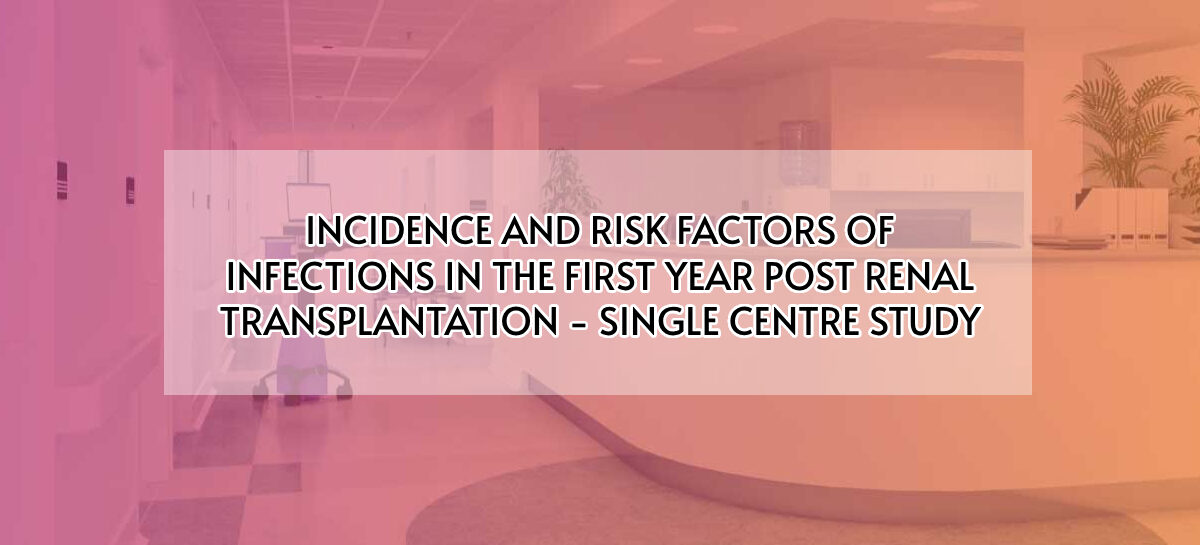INTRODUCTION
Infections remain a common complication of solid organ transplantation. They are the leading cause of morbidity and mortality in the renal transplant recipients. Most infections in the first month of transplant are typically hospital acquired whereas infections in 6-12 months are community acquired infections. (1) Opportunistic infections most frequently occur in the first year post transplant. Infection exposure may promote rejection, block tolerance or stimulate cross reactive cellular alloimmunity.(2)
AIM
To determine the incidence of infections and associated risk factors in the first year post renal transplant.
METHOD
This is a retrospective study of the data of 145 patients who underwent renal transplantation. These were analysed for the incidence and risk factors of infections occuring in the first year post renal transplant.
RESULTS
145 patients were included in the study. 28.2% (41 out of 145) patients had alteast one infection episode in the first year post renal transplant. Most common were urinary tract infections (43.9%). E.Coli and Klebsiella pneumoniae being the most common pathogens. Recurrent UTI were seen in 5 of them. Surgical site infection was seen in 19.5% and pulmonary infections in 19.5% of recipients. Others include gastrointestinal infection (0.09%); skin infection (0.07%). Bacterial infections were more common (78%). Of the 41 recipients who had infection, three of them had viral, three fungal infection. Tuberculosis was seen in 3 patients, with one of them having TB reactivation post transplant.7 out of 41 recipents had biopsy proven acute rejection. Twelve patients developed post transplant diabetes mellitus in the first year. 4 patients had lost follow up. Of 41 recipients who developed infection, 2 of them underwent graft nephrectomy and 3 patients ended up in hemodialysis. Death was seen in 2 recipients with bacterial sepsis and fungal infection being the cause.
CONCLUSION
Pantients who undergo renal transplantation are subjected to immunosupression which increase the burden of post transplant period. Understanding this can aid in the development of preventive strategies and optimised care for transplant recipients during the early post transplant period. And also prevent moridity and mortality of renal transplant recipients.
REFERENCES
1. Fishman JA, Issa NC. Infection in organ transplantation: risk factors and evolving patterns of infection. Infect Dis Clin North Am 2017;24:273
2. Sein LK, Cornberg M, Brehm MA, et al, CD8 memory T cells: cross reactivity and heterologous immunity; Semin Immunol 16:335-47
 Dr Yashilha D
Dr Yashilha D
Nephrology PG Resident
Kauvery Hospital, Chennai



